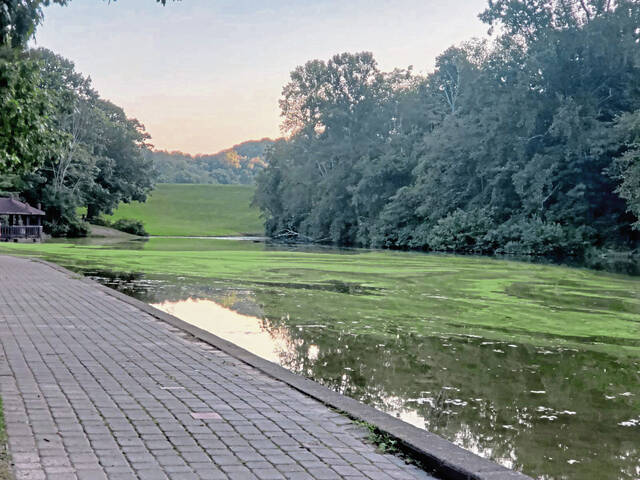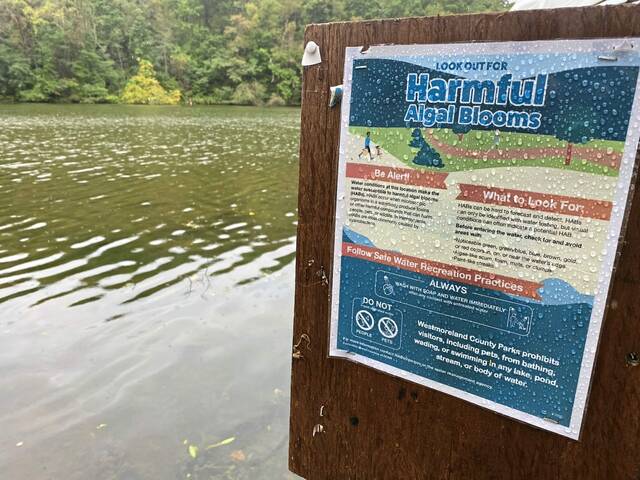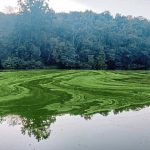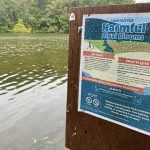Signs warning visitors about a harmful algae bloom at the lower lake in Twin Lakes Park are expected to be taken down this week as the conditions dissipate, according to Westmoreland County Bureau of Parks and Recreation director Brandon Simpson.
He said the signs were put up a couple weeks ago after a visitor, who happened to be a state Department of Environmental Protection employee on their personal time, noticed harmful algale bloom (HABs) in the area of the gazebo. The next day, DEP sent biologists to do testing and confirmed the situation, according to spokeswoman Lauren Fraley.
“HABs typically occur most in August and September when surface waters are warm and there are longer stretches of hot, dry weather followed by rain events which cause nutrients to run off into the water,” Fraley said. “HABs also tend to rise to the water’s surface later in the late afternoon or dusk hours and fall deeper in the water column during daylight hours.”
Algae and bacteria that live in water can grow quickly when the conditions are right — when water is warm, nutrient-dense and slow-moving or stagnant, according to the Centers for Disease Control and Prevention. The blooms can change the color of freshwater, saltwater or brackish water and appear as foam or scum on the surface. They can be harmful to people, pets and wildlife that use the water.
“We don’t allow dogs or people in our water anyway,” Simpson said. “We’re pretty confident because of the rules that we have.”
Fishing was not affected at Twin Lakes, which straddles Hempfield and Unity townships. Simpson said it was the first time such a situation at Twin Lakes had been brought to the attention of parks officials, he said.
Green Lick Reservoir just over the border in Fayette County had the same problem starting in late August, according to Heather A. Smiles, chief of the environmental services division of the Pennsylvania Fish and Boat Commission. Advisory signage about the bloom was posted at the water, and more testing by the DEP will be conducted next week, she said.
Rain over the past few weeks likely has helped to diminish the conditions there, Smiles said.
Cooler weather helps, too, Fraley said.
State officials formed the Pennsylvania HABs Task Force in an effort to coordinate monitoring, response and communication. To report a potentially harmful algae bloom, email habs@pa.gov.
Exposure symptoms in people can include eye and nose irritation, rashes, abdominal pain and numbness. Symptoms in animals include difficulty breathing, convulsions, excessive drooling and loss of energy or appetite.













